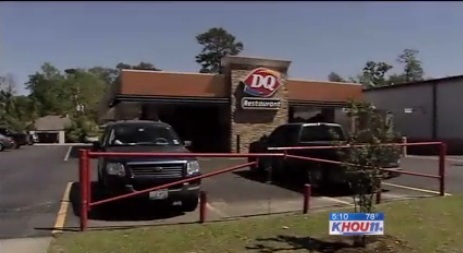Guest column: Does ICS stand for 'Information Communications Standstill'?
 Anyone who has had the misfortune of hearing me in recent years get on my soap box during speaking engagements or one-on-one conversations about how public safety agencies handle crisis communications or reputation management issues has heard me recommend the book Now Is Too Late, by Gerald Baron. The book summarizes so much of what I have come to believe after almost 38 years as a reporter. In my opinion, if you are in a leadership position or want to be, it is a must read.
Anyone who has had the misfortune of hearing me in recent years get on my soap box during speaking engagements or one-on-one conversations about how public safety agencies handle crisis communications or reputation management issues has heard me recommend the book Now Is Too Late, by Gerald Baron. The book summarizes so much of what I have come to believe after almost 38 years as a reporter. In my opinion, if you are in a leadership position or want to be, it is a must read.
It is only in recent weeks that I have made contact with Gerald Baron. I wrote a column for his site Crisisblogger.com and, in turn, he suggested that some of the writings of Bellingham (WA) Fire Department Chief Bill Boyd would be good reading for the STATter911.com audience.

Chief Boyd and Gerald Baron got to know each other during the 1999 Whatcom Creek Pipleline Explosion when Boyd was the fire department PIO. The incident pushed Baron into the crisis communications field and brought about the development of his PIER crisis management software currently being used by both the U.S. Coast Guard and BP during for the Deepwater crisis.
Chief Boyd has given us permission to use his most recent column on a potential roadblock in getting timely information out during a crisis. We hope to run more from Chief Boyd in the future.
Does ICS stand for “Information Communications Standstill”?
By Chief Bill Boyd, Bellingham Fire Department
As I am typing this my Twitter monitoring site is logging messages by the second about the huge earthquake off the coast of Chile. I am looking at pictures and comments from earthquake survivors, their relatives and others monitoring this disaster within seconds of being posted. The speed and amount of information being disseminated right now is staggering, and I am contributing to this situation by relaying pertinent information to my followers through Facebook, Twitter and PIER Systems (which also posts immediately to my city’s internet news web site).
This unfolding and widespread crisis highlights the importance of strategic agility, speed and accuracy in disseminating information during a high visibility emergency event. As a Fire Chief and Incident Commander for a regional incident management team, I recognize the need to immediately implement and use all available information tools and resources to push accurate information out to the public. How many of you with Incident Commander responsibility understand this?
The days of a Public Information Officer (PIO) sitting down at a computer and generating a two paragraph media release a couple of times a day, and an interview here and there are gone. If you still think this is all the PIO really has to do then you might as well give them an old typewriter and carbon paper. As an IC, I “define the box” the PIO will operate within (giving them the flexibility and boundaries to immediately release information without me having to approve it). The IC needs to immediately set policy, validate key real time message concepts and then do the most important thing- let the PIO loose to do their job. As an IC in this day and age, I can ill afford to get further behind the information dissemination curve (assuming we are already behind thanks to social media, camera cell phones, etc…).
This also means PIOs must be skilled in creating short messages, and relaying them in the most succinct way (how would you relay an evacuation order on Twitter?). In the major events I have been involved with over the years, this type of messaging was not available. Now, it is the preferred method of communication by many. Yet, it remains foreign to many in the emergency response community.
IC’s need to wake up and realize the impact of the explosive growth of social media and the resulting expectation for immediate and accurate information. If the public does not get it from Incident Command they will get it from somewhere else, relay inaccurate information and/or undermine your authority by venting their frustrations about lack of information.
Hey PIOs! How prepared are you in quickly shaping and distributing messages during a dynamic crisis event? If you are still using the “media release” tool as your primary method of distributing information, I suggest signing up for a free social media site and see how people are really communicating news and information. It is time for those of us with incident command authority to not only recognize the power of these tools and the resulting culture change, but more importantly take the steps to establish policy, secure training, and prepare to quickly deploy these tools during a crisis event.





